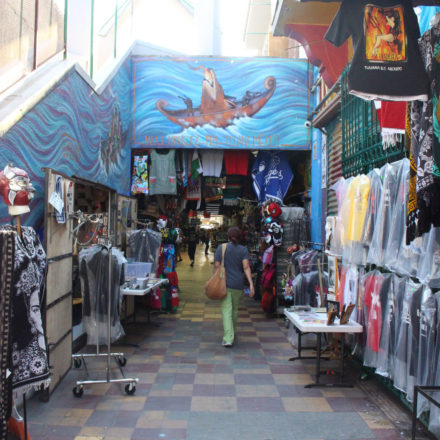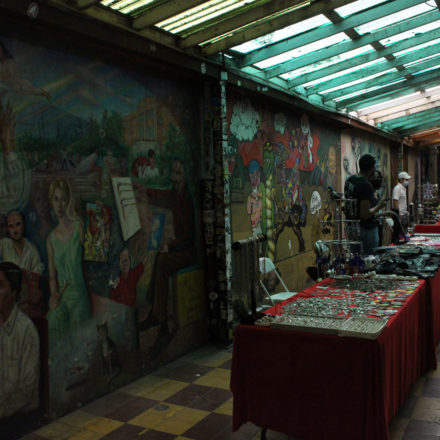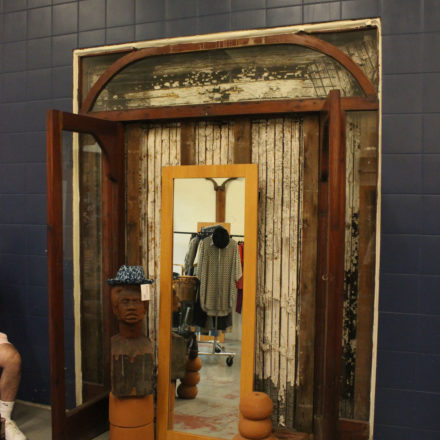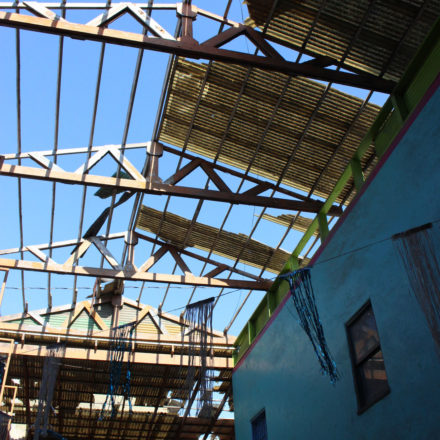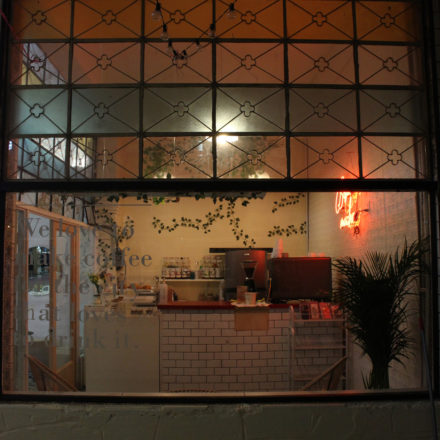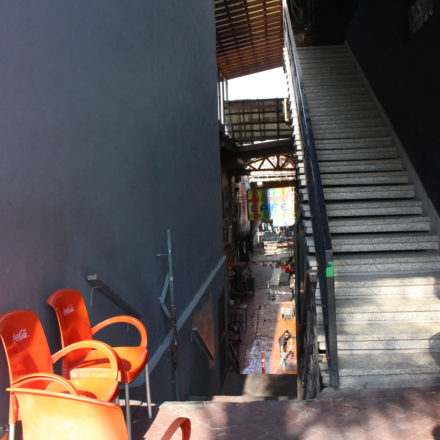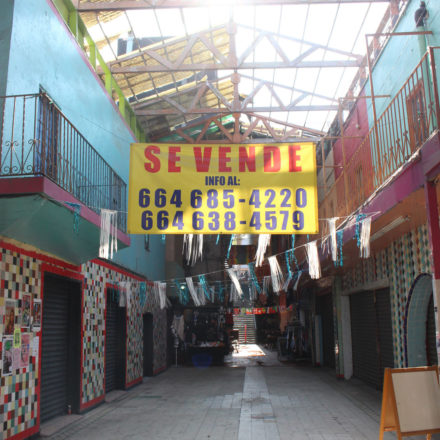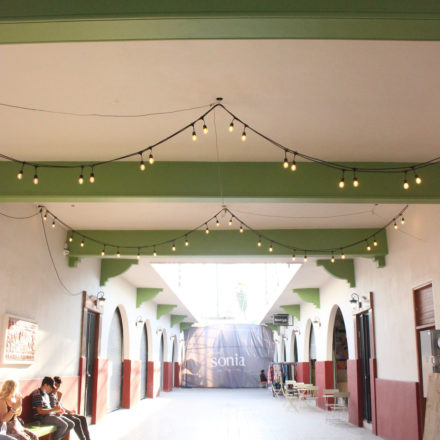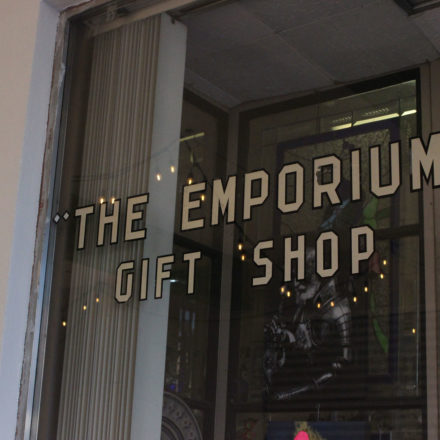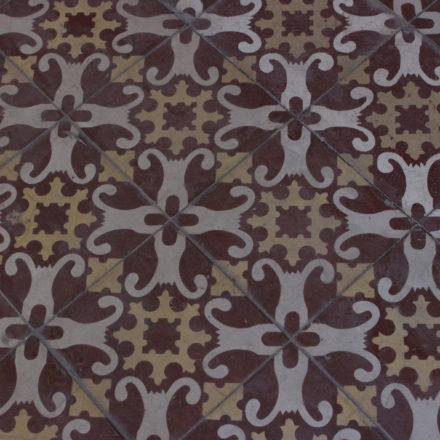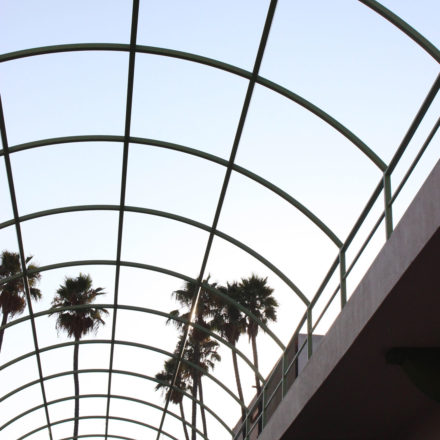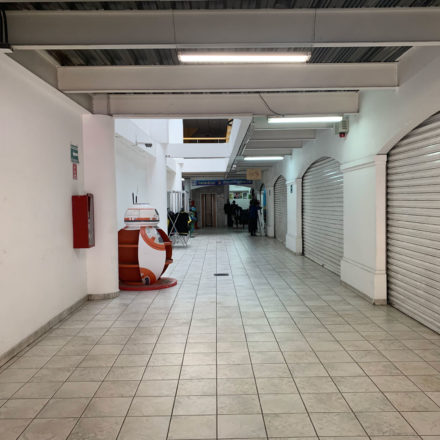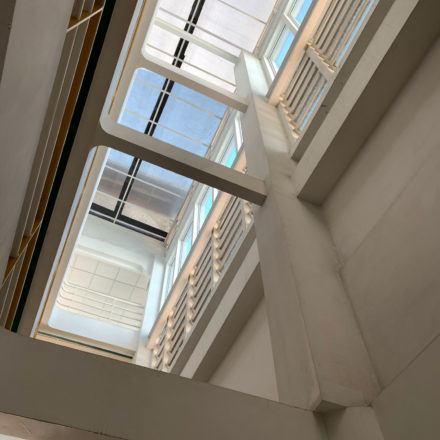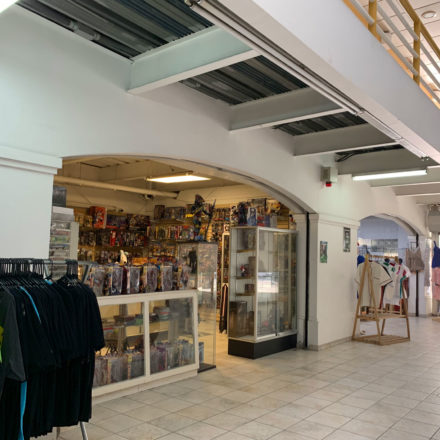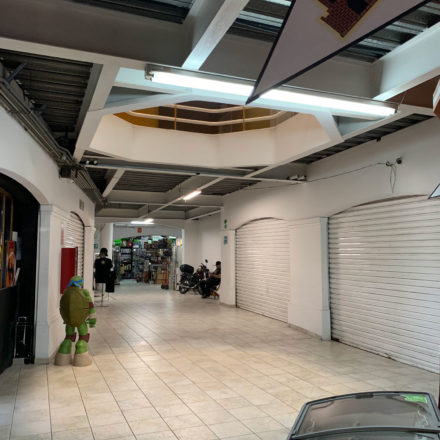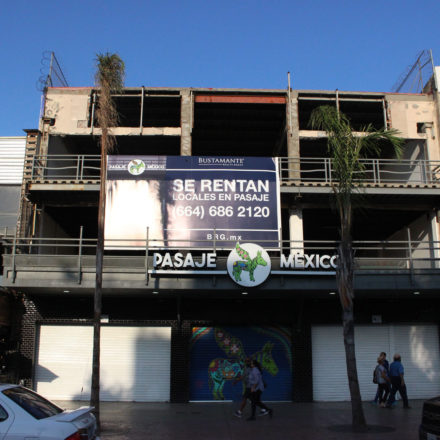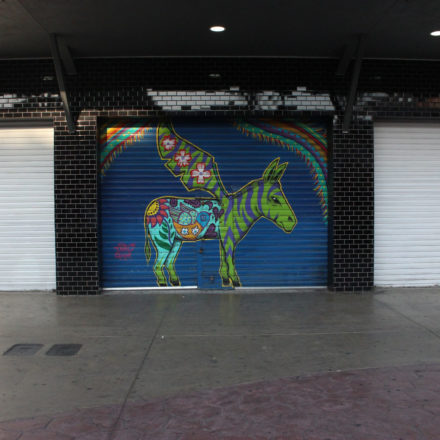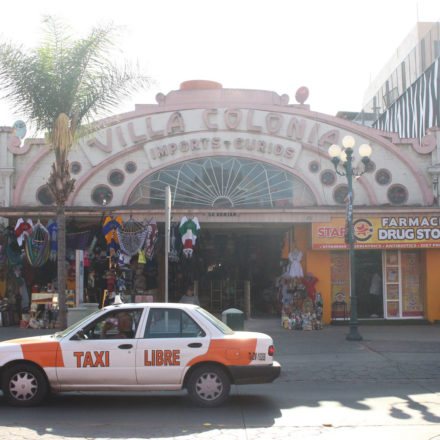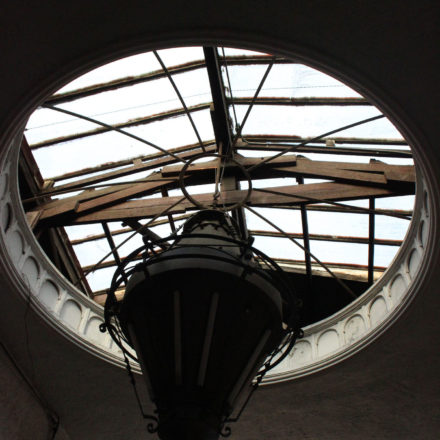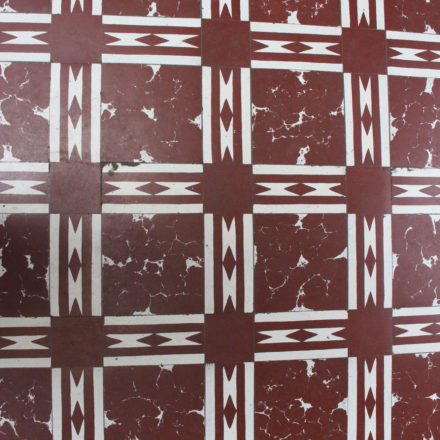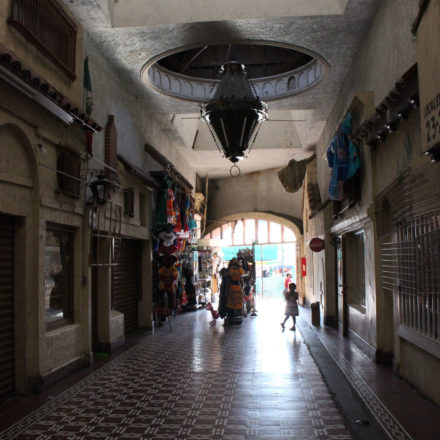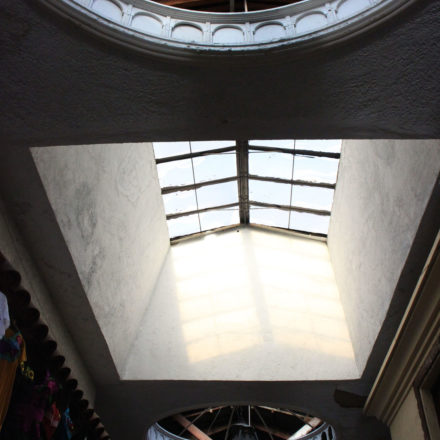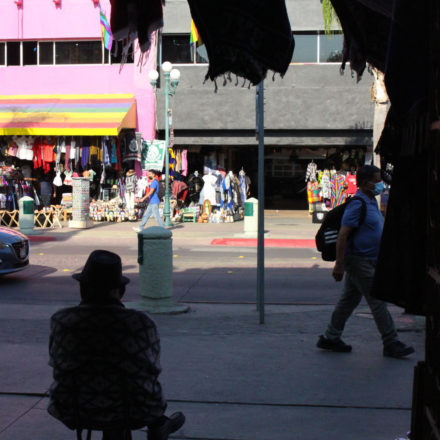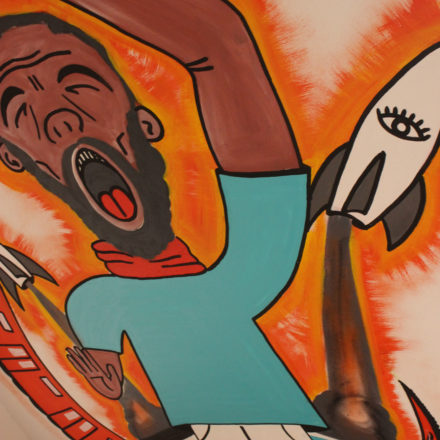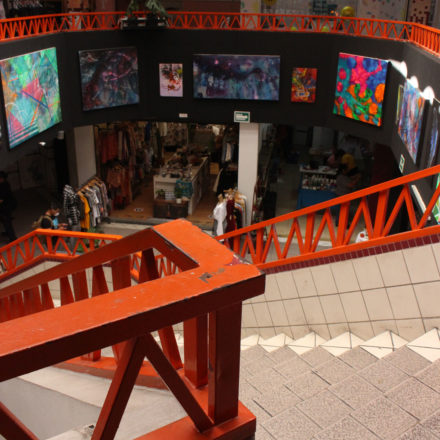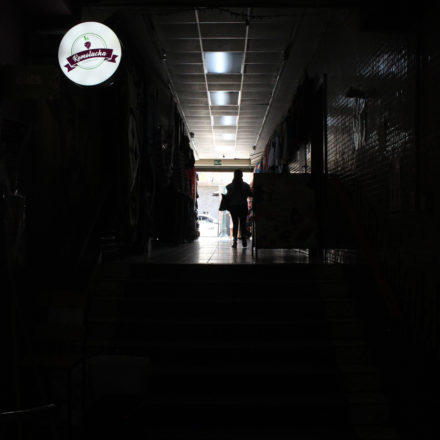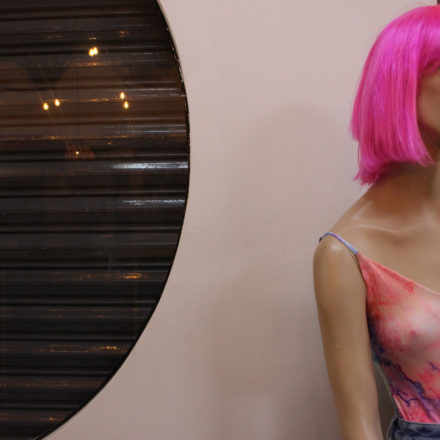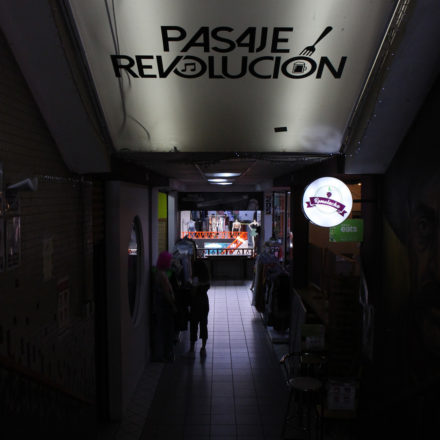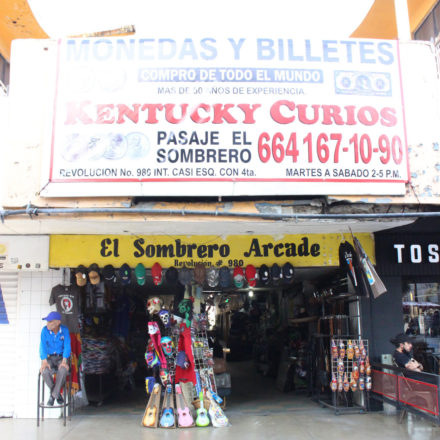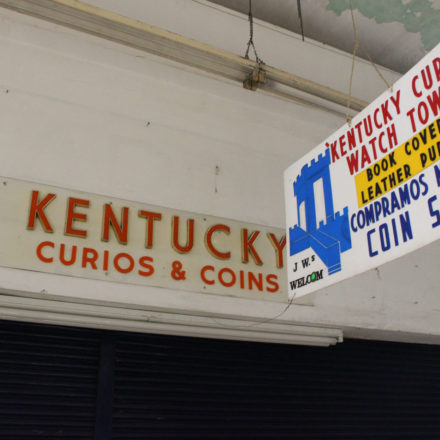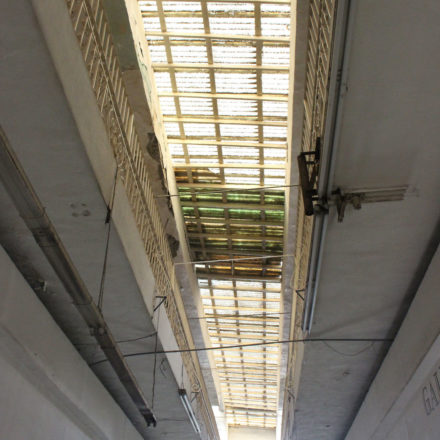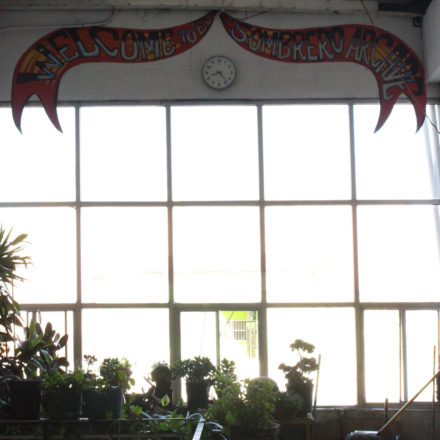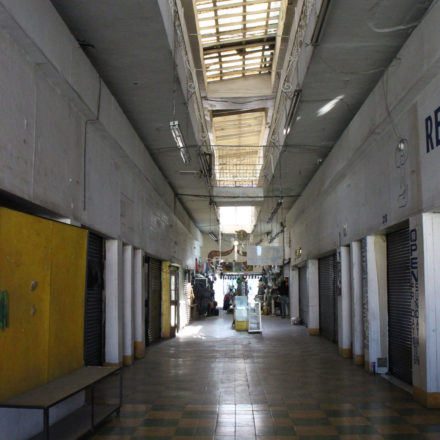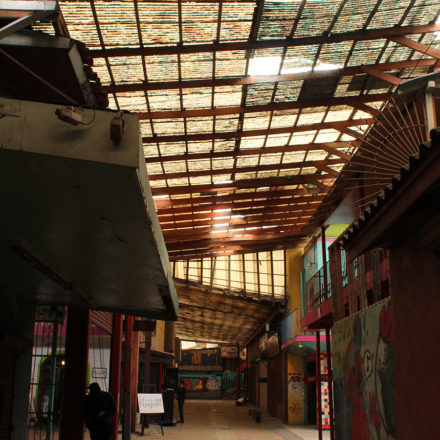Born in Tijuana, Architect by the Universidad Iberoamericana CDMX-Tijuana. She collaborated in the Art and Architecture Collective “Torolab" participating in the projects of "La Granja Transfronteriza" and Los Angeles Public Art Triennial "Current: LA FOOD.” She served as a teaching assistant at the Universidad Iberoamericana in Tijuana. She is currently studying a Postgraduate course in "Lighting Design" taught by Arquine and the Polytechnic University of Catalonia. She collaborates in “Se Hace Arquitectura,” an office dedicated to architectural and urban design.
Design Article
Salvando A Los Pasajes, Historia Tijuanense
What this is
Design articles offer tools and knowledge that designers can use in their practice.
When & Where
All week
Tags
Design = Activism, ConnectionDiscipline Urban, Architecture
One way to learn about the history of a city is by rediscovering its characteristic spaces. This article gives you an introduction to the 8 existing passages (pasajes) on the famous Avenida Revolución; the Pasaje Rodriguez, Gómez, Sonia, Rio Rita, México, Villa Colonial, Revolución and the Sombrero Arcade. By revealing a little bit of their history, architecture and interesting facts, this article attempts to generate reflection on the importance and the reconsideration of the value of the “pasajes," their current state and the urgency to protect them.
SALVANDO LOS PASAJES
Carolina Gómez Bernal. SE HACE ARQUITECTURA
The conversation regarding the preservation of the “pasajes” was rekindled a few months ago when my postgraduate teacher asked us to choose a place to do our lighting intervention. I choose the Pasaje Gómez as my space; I find the saturation of color on its walls, its multiple tiles, its balconies and its ceiling fascinating, although the appearance of abandonment has become much more noticeable during the pandemic.
The comments I received throughout the project focused on the poor condition of the pasaje, which led me to feel frustration — towards my teacher for not being able to understand Tijuana but also with myself and the population of this city for allowing the Pasaje Gómez to have that appearance.
I think that some of the most fascinating spaces in a city are those that take you back to another era and tell you its history; unfortunately Tijuana is a city where the population is not usually kind to the preservation of these sites. The lack of interest from the citizens to recover, preserve and respect these spaces that are part of the architectural and historical identity of Tijuana has inspired me to research the pasajes and share their importance.
The truth is that Tijuana is not a beautiful city but it is a very interesting one; its geographical location makes it unique, and that influences the urban layout. We are going to focus on the events that led to the creation of the pasajes. It all started when the United States entered the Prohibition era that lasted from 1920 to 1933, causing their citizens to seek fun spaces outside their country.
Because of its proximity to San Diego and Los Angeles, Tijuana became the perfect destination for these activities. That was the moment when the focus of the city turned toward entertainment and the pleasing of tourists, especially from the United States. Glamorous casinos, cantinas, restaurants and shops appeared on Avenida Revolución and were visited by celebrities of the time. Another important event is the appearance of the Casino Agua Caliente. This is how Tijuana became a city for enjoyment, pleasure and fun.
Based on the information provided by the Historical Archive of the city, we know that the “pasajes” were actually conceived as “callejones” (alleys) that connected Avenida Revolución with Avenida Madero and Avenida Constitución, as well as with the surrounding streets. Due to the great influx of tourism in Avenida Revolución, the alleys became appropriated spaces by the citizens for the sale of Mexican handicrafts best known as Mexican curios.
Originally there were 12 pasajes located on Avenida Revolución, but we can only identify 8; Pasaje Rodríguez, Gómez, Sonia, Río Rita, México, Villa Colonial, Revolución and the Sombrero Arcade, some with greater historical importance than others. Finding information was not easy, as there is no written record about the pasajes; what is presented here is the compilation of found information and personal observations made through visits to the site.
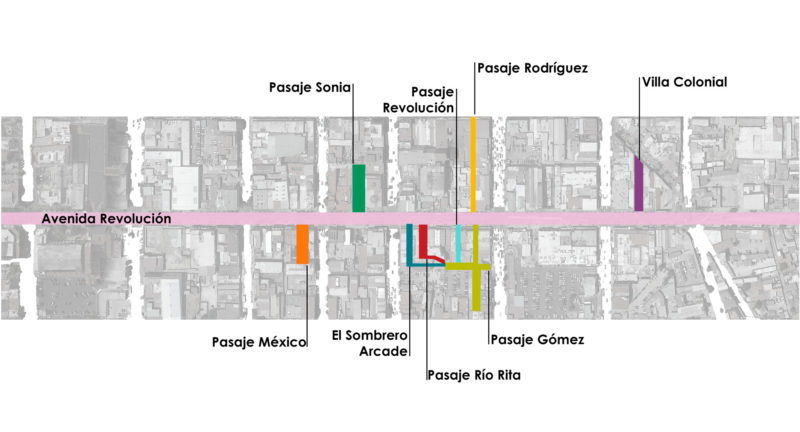
PASAJE RODRIGUEZ
Probably the best known pasaje in Tijuana, the Pasaje Rodríguez is located on Avenida Revolución between 3rd and 4th streets in what was previously known as the Foreign Club.
The Foreign Club was the most important casino in Tijuana before the establishment of the Casino Agua Caliente, ready to entertain all the American tourists who wanted to have some fun despite the Prohibition that existed in their country. The original Foreign Club burned down in a fire in 1935, and a new Foreign Club Hotel appeared.
The Avenida Revolución was booming with activity and its streets were full of noise because of all the restaurants, cantinas, and tourists filling them. That is the reason why Eugenio Rodríguez Ávila, one of the investors of the Foreign Club, decided to create an alternative route for the guests and visitors of the hotel, far from the noise of the Revolución. That is how Pasaje Rodríguez, formerly known as Callejón Rodríguez, was created.
Like most of the other pasajes that were dedicated to the sale of Mexican curios for tourists, after many years of activity, there was a decrease in sales in the 80s and 90s.
This is where Max Mejía and the “Queremos Tijuana” civil association enter the story. Looking for a place to locate their offices and with the purpose of recovering forgotten spaces in the city, they rented a space in the already deserted pasaje. Because they made the space more accessible for local artists and held a lot of events, the pasaje filled with life once again. New murals adorn the walls of the pasaje, but it is still possible to see vestiges of the original pasaje in its yellow and brown floors and an original door that was found within the walls of the new premises.
A pioneer in the pasaje recovery movement, it is now a renowned cultural space where you can find coffee shops, bookstores, record stores, clothing, galleries, some curios shops and the famous Mamut brewery.
Fotografía: Carolina Gómez
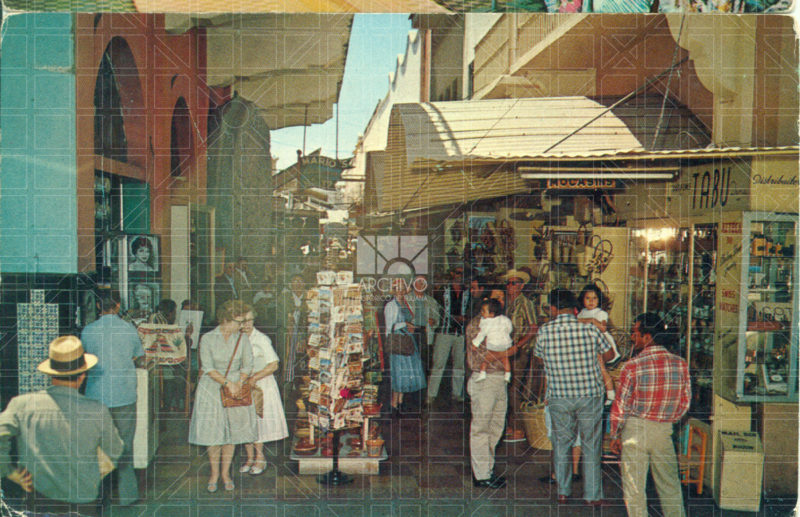
PASAJE GÓMEZ
If I had to describe Pasaje Gómez with one word, I would probably choose “color”. Floors, balconies, doors, walls — there is a mix of color everywhere. It’s also known for housing the famous Mexican food restaurant "La Especial" of which now there is only one taco stand. Located on Avenida Revolución between 3rd and 4th streets, the pasaje goes 4 meters below the main street.
The Pasaje Gómez has a lot of charm; its ground floor is filled with shops, while the 2nd floor is covered with balconies of the apartments that are there, which give it the appearance of a typical Mexican neighborhood or “vecindad”.
There is no exact date of its establishment, but it is known that it was in the 40s, and it specialized in the sale of the famous "Mexican curios" or Mexican handicrafts.
As in most pasajes, the restrictions at the border after the events of 9/11, as well as the rising of violence that took place in the city in 2008, affected the influx of tourists and made the pasaje a desolate and even a dangerous place.
The reopening of the Pasaje Gómez was possible thanks to Max Mejía. In 2010 the pasaje was owned by 5 different people, and they divided the pasaje with aluminum doors into 5 spaces. Max suggested lowering the rent of the premises to attract local artisans and artists to occupy the pasaje.
The suggestion was taken, and the pasaje filled with life, hosting various cultural festivals over the years. You can find shops that look like they have been in the pasaje for years, like the dentist office, while the other spaces are constantly changing between coffee shops, clothing stores, galleries, art product stores, bookstores, beauty shops and others.
The passing of the years is evident in the pasaje — the characteristic roof has slowly shed since the first time I visited. On my last visit, I found puddles of water inside, empty commercial spaces, and walls in need of painting. I understand now why I felt frustrated with the observations of my teacher towards the pasaje; it is the consequence of seeing the conditions in which it is found.
Currently the pasaje Gómez is up for sale.
Fotografía: Carolina Gómez

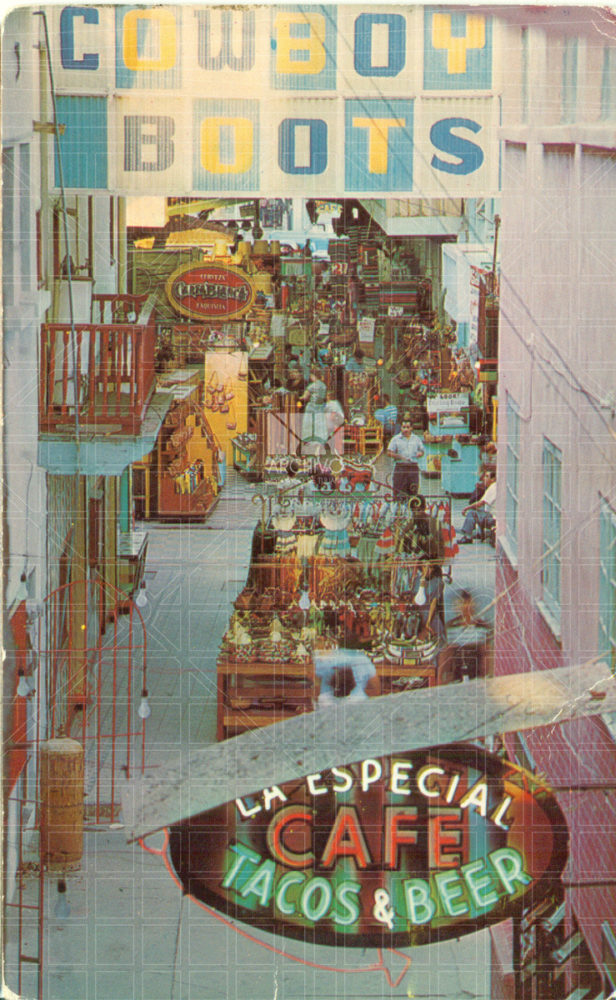
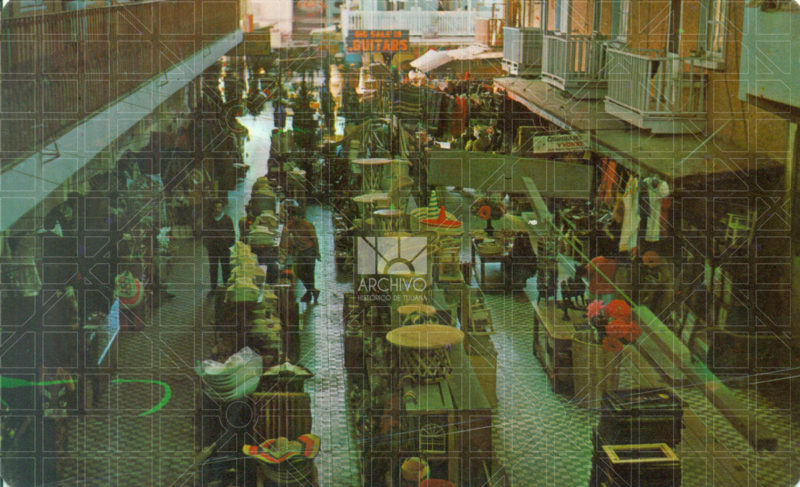
PASAJE SONIA
Located on Avenida Revolución between 4th and 5th street, it was established in 1950 with the purpose of offering Mexican curios and crafts for tourists, especially Americans. It was recently reopened after being part of a restoration project.
The most iconic store in the pasaje is called “Emporium”, which for 70 years has been selling handicrafts and shows us a little of what the Pasaje Sonia was originally.
Its characteristic arches that were once the entrance to the Mexican curios shops now form the new entrance of the pasaje, as well as its original ceramic mosaics.
Fotografía: Carolina Gómez
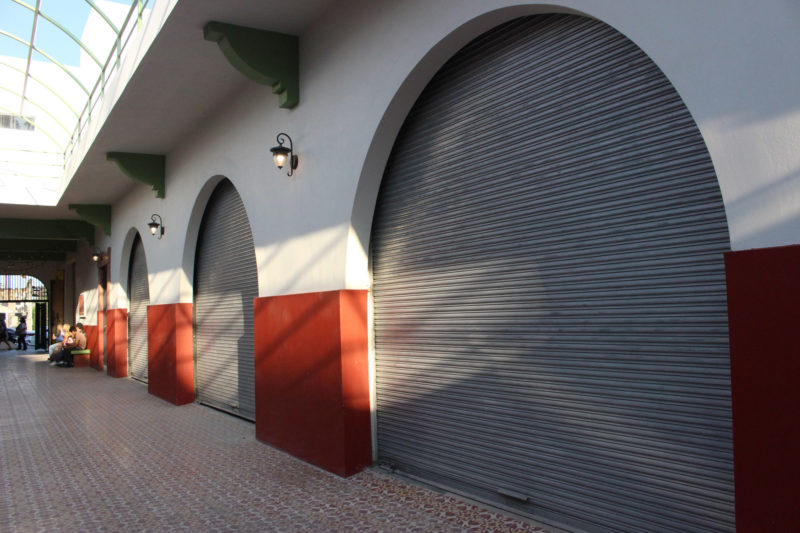
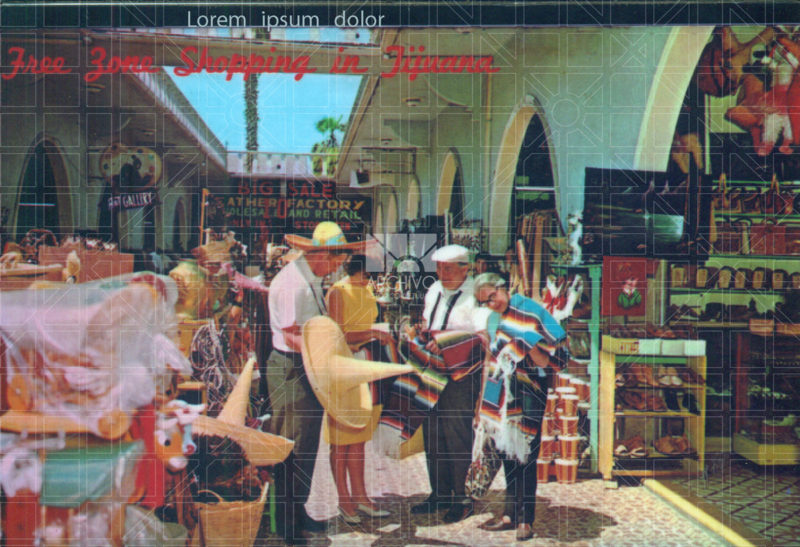
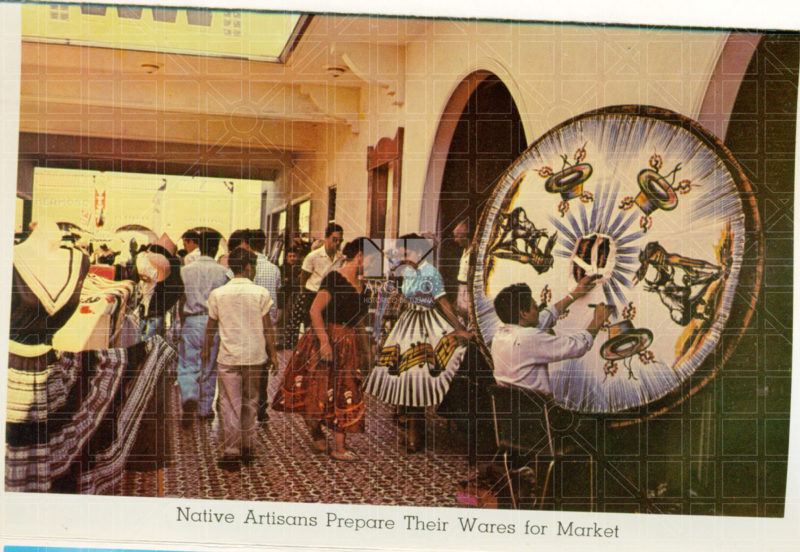
PASAJE RÍO RITA
The Pasaje Río Rita is located inside what was the Bar Río Rita, a mythical Tijuana bar.
While the pasaje is not the most recognized part of the complex, the history of the place is quite interesting. The building that is now known as Hotel Río Rita is located on Avenida Revolución between 3rd and 4th streets. Its first name was the Casino Granada, and it was in the 40s when it was renamed Río Rita due to the famous comedy of the 40s “Río Rita”.
The bar became an icon of the city due to the important cultural movement that occurred in the 80s and 90s at the venue. Famous musical groups performed in the space, which was underground and very spacious. It is on the floor at street level where the pasaje that was destined for the sale of Mexican curios was located. The entire complex was part of a major remodel and is now known as Hotel Río Rita.
Fotografía: Tatiana Perez
PASAJE MÉXICO
Located on Avenida Revolución between 5th and 6th streets, the history of Pasaje México is very interesting.
It began with World War II and the bombing of Pearl Harbor. In Tijuana there was a large community of Japanese who lived on Avenida Revolución. Due to the bombing of the US base by Japan, the Japanese community was considered a threat, and it was ordered they be relocated. The Mexican authorities then sold the land occupied by the Japanese, and that is how many Tijuana merchants took over a space on Avenida Revolución.
José González and his son Gustavo are part of this story. In 1945 José bought half of the land and houses of the Japanese and opened his first handicraft and perfumery store in what would become half of the Pasaje México. With the passing of time, Gustavo González bought the other half of the space, and this is how the pasaje was unified and became a very important handicraft center.
Currently the pasaje is closed but it has hosted important design events in the city.
Fotografía: Carolina Gómez
PASAJE VILLA COLONIAL
Located on Avenida Revolución between 1st and 2nd streets, this was originally known as the "San Francisco Café", founded in 1924.
With the pasaje of time it became a space for offices and commercial premises, and today you can find Mexican handicraft stores as well as artisans at work. In July of 1980, the building that houses the pasaje was recognized by the Historical Society of Tijuana as an Art-Deco building in the city.
Entering the pasaje transports you to another era, with chandeliers and mosaics in perfect condition, which, in contrast with the Mexican handicrafts, present that perfect combination between the glamour that existed in the city in the 1920s and the items that have given life and comprised the Avenida Revolución for so many years.
Fotografía: Carolina Gómez
PASAJE REVOLUCIÓN
The exact date of its establishment is not known, but it is currently one of the most active pasajes.
The Pasaje Revolución is located on Avenida Revolución between 3rd and 4th streets. In it you can find clothing stores, coffee shops, bakeries, galleries, tattoo shops, and breweries, among other stores.
The activist Max Mejía was one of the promoters of its renovation, as well as the renovations of the Pasaje Gómez. The Pasaje Revolución has been for many years a space that supports and promotes local art, and it shows, as most of its visitors and users are young adults. It also connects with the Pasaje Gómez, thus creating a perfect space for cultural events.
Fotografía: Carolina Gómez
SOMBRERO ARCADE
This is the most somber, hidden and difficult to find of the pasajes.
Located on Avenida Revolución between 3rd and 4th streets, it welcomes us with a simple facade with a low entrance covered by hats.
I have to confess that I had never been curious to enter this pasaje. When I finally visited it, I found an almost empty space with most of its premises closed, but I became really impressed by the way the light enters the space, its high ceiling, and the fact that everything is painted in white. It gives the impression of being a great canvas — an incredible space waiting to be occupied.
I met one of the tenants; he told me that it was almost closing time and that the man from the coin store is the one who knows the most about Tijuana.
It seems almost impossible to find information about this pasaje, and that makes it even more interesting. Now it is impossible to notice it, but the Pasaje Gómez, Revolución, the Sombrero Arcade and the Rita River are connected to each other.
Fotografía: Carolina Gómez
The pasajes have gone through different situations — times of glory, of decline, managed to survive the violence in the city, the restrictions on the border and even a pandemic. Some have emerged victorious while others try to reclaim the fame and abundance of those years.
This is only an introduction to the very complex and interesting history of the Pasajes of the Avenida Revolución because there is currently no written record of them. The intent is to hopefully inspire interest in Tijuana’s history, in order to recognize, protect and intervene in the historical spaces of the city in a respectful way.
See you in 2022 at the next edition of San Diego Design Week for a guided tour of the Pasajes of Avenida Revolución!
